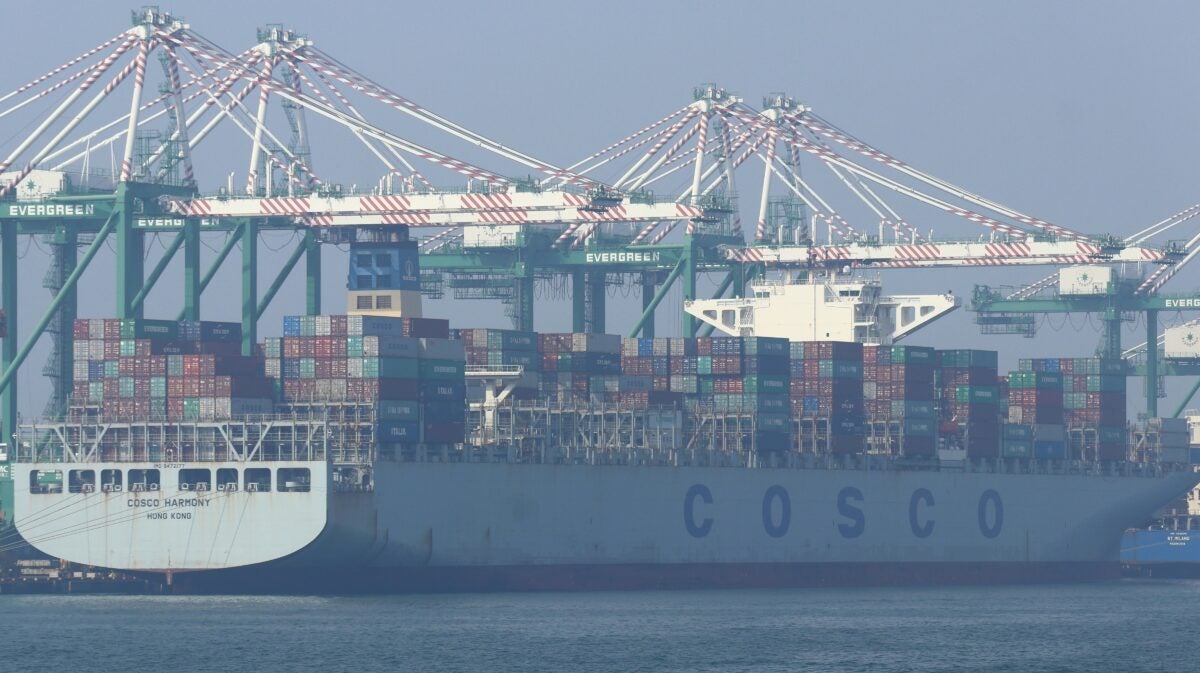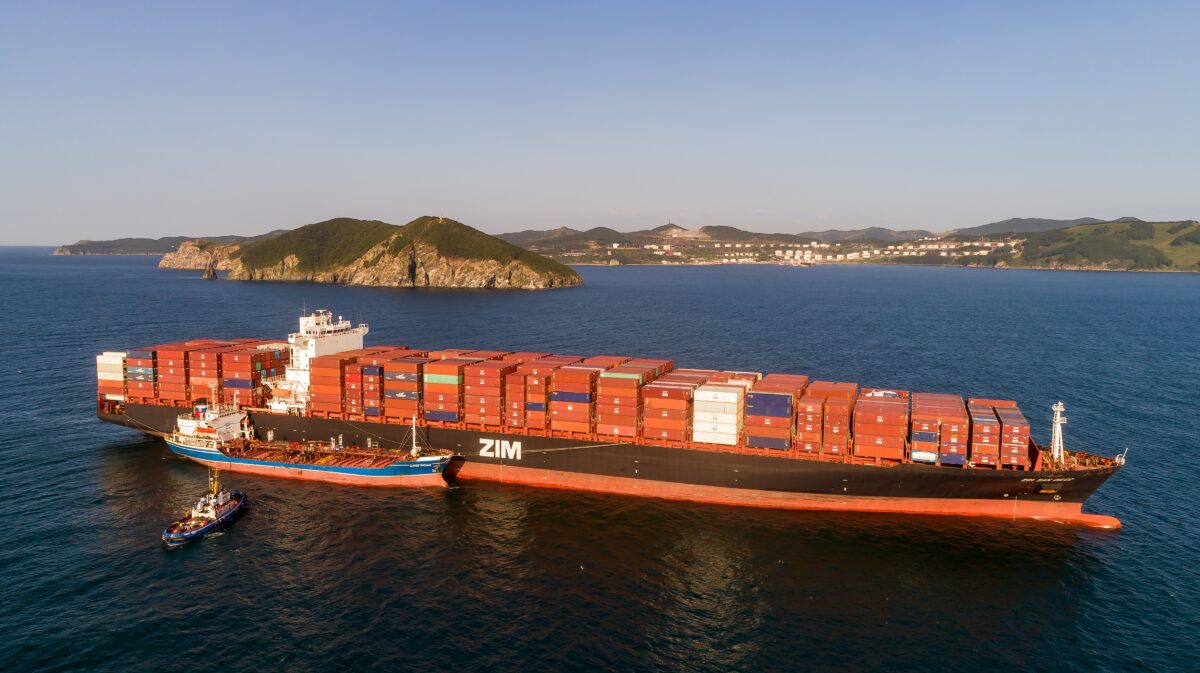There were high hopes in the 2000s and even the 2010s that ocean shipping would evolve into something more than a niche trading and investing space on Wall Street.
The hope was that consolidation would whittle down the crowded field to a few large-cap whales with business models that worked across cycles and garnered the respect of larger investment funds. The reality over the past half-decade: Consolidation is coinciding with larger-cap shipping stocks going private. And the field of shipping minnows — including penny stocks — keeps growing.
Another one bites the dust …
The latest expected departure: Atlas Corp. (NYSE: ATCO), owner of Seaspan, the world’s largest container-ship lessor. It has 127 vessels on the water with total capacity of 1.16 million twenty-foot equivalent units and an additional 67 on order with total capacity of 793,800 TEUs. Atlas has an equity valuation (market cap) of $3.5 billion.

Atlas received a take-private proposal on Aug. 4 from holders of 68% of its stock, as well as ocean carrier ONE. The stated rationale for the plan is that “the shipping industry will go through significant changes over the next several years … and it will be essential for the company to make timely decisions, many of which could impact short-term results … decisions [that] cannot be made as efficiently as a public company.”
That sounds like an argument that shipping companies shouldn’t be public in the first place. The industry has always faced significant changes in its markets — many unforeseen. This has always required public management to weigh short-term stock effects versus long-term returns.
Loss of shipping stocks due to privatizations
The public liquefied natural gas (LNG) shipping sector, in particular, has been gutted by privatizations and fleet sales in recent years. “Unfortunately, there are very few ways to play LNG shipping with the public equities,” noted Stifel analyst Ben Nolan in May.
Teekay LNG was acquired by private equity company Stonepeak in January. GasLog Ltd. was bought by BlackRock in June 2021.
Outside of the LNG space, container-equipment lessor CAI was bought by Japan’s Mitsubishi Capital in November. Seacor, which owned U.S.-flag vessels, was taken private by American Industrial Partners in April 2021.
Mixed-fleet owner DryShips was taken private by its controversial Greek sponsor George Economou in August 2019.
“You can’t paint all of the privatizations with a broad brush,” a shipping finance source who declined to be identified told American Shipper. “DryShips had become uninvestable and would never get anything near NAV [net asset value] valuation. Seacor was a conglomerate that frankly didn’t act as a public company.
“The one thematic you could arrive at is that LNG shipping is long-term-contract-based, but because of the pool it swam in — shipping — it was never going to get the infrastructure-like valuations it truly deserved. So, private equity and others were attracted to the cash flows and low entry points and took them private.”
Loss of stocks due to sales
Beyond privatizations, the field of U.S.-listed shipping stocks has been pared by sales to other public companies that are not predominantly in shipping, or are outside U.S. equity markets.
In January, Golar LNG Ltd. (NYSE: GLNG) exited shipping with the sale of its LNG carrier fleet to a new entity, The Cool Co. (The Cool Co. is listed in Oslo.)
Golar LNG Partners was sold to New Fortress Energy (NYSE: NFE) in April 2021.
The company formerly known as Scorpio Bulkers announced its partial exit from bulk shipping in August 2020. It confirmed a full exit that December. It sold its last bulker in Q2 2021. The renamed company, Eneti (NYSE: NETI), is now focused on offshore wind-farm installations. Eneti sold its entire legacy stake in sister company Scorpio Tankers (NYSE: STNG) for $83 million on Monday.
Loss of stocks due to consolidation
A further reduction in shipping names is coming through consolidation by larger U.S.-listed players.
Navios Holdings (NYSE: NM) announced the sale of its entire drybulk fleet to daughter company Navios Partners (NYSE: NMM) on July 27. Previously, Navios Acquisition bought Navios Midstream in December 2018, and Navios Partners bought Navios Acquisition and Navios Containers last year. There’s now one Navios stock covering containers, dry bulk and tankers — Navios Partners — down from five.
In the tanker space, Frontline (NYSE: FRO) plans to acquire Euronav (NYSE: EURN) and create a combined entity with a market cap of $4.2 billion. Euronav CEO Hugo De Stoop would lead the combined entity and current Euronav shareholders would own 55%.
That megadeal is contingent on more than 50% of Euronav shareholders tendering stock to Frontline in Q4 2022 — a tender that may come up short given opposition by the Saverys family, which owns 20% of Euronav’s shares.
Other consolidations in the U.S. public market over the past-half decade included the acquisition of Diamond S Shipping by International Seaways (NYSE: INSW) in July 2021, the merger of Global Ship Lease (NYSE: GSL) and private box-ship owner Poseidon Containers in November 2018, the sale of the Gener8 Maritime fleet to Euronav and International Seaways in June 2018, and the sale of Navig8 Product Tankers’ fleet to Scorpio Tankers and the BW Group’s supertanker fleet to DHT (NYSE: DHT) in 2017.
Additions from spinoffs, IPOs and direct listings
The loss of aggregate market cap in the U.S.-listed shipping space due to privatizations and fleet sales would have been severe save for one big arrival: Israeli container liner operator Zim (NYSE: ZIM), which conducted an initial public offering in January 2021. Zim currently has a market cap of $6 billion and is by far the largest U.S.-listed shipping stock.

There were three other sizeable Wall Street newcomers in recent years: LNG carrier owner Flex LNG (NYSE: FLNG) debuted via a direct listing in June 2019. Product tanker owner Torm (NASDAQ: TRMD) dual-listed on Nasdaq in January 2018. And dry bulk owner Grindrod (NASDAQ: GRIN) dual-listed on Nasdaq in June 2018.
Beyond that, newcomers have been dominated by Nasdaq-listed microcaps that frequently dip in and out of penny-stock territory and have extremely low market caps. Pricing of these listings, all sponsored by Greek shipowners, is highly volatile, assumedly appealing to retail traders who buy stocks as if placing bets at a casino.
The latest entrant is bulker owner United Maritime (NASDAQ: USEA), a spinoff of Seanergy (NASDAQ: SHIP). United’s shares have lost 73% of their value since listing on July 6. Its current market cap is under $20 million.
Shares of tanker owner Imperial Petroleum (NASDAQ: IMPP) — a spinoff of StealthGas (NASDAQ: GASS) — were listed on Dec. 3. Its shares traded at 37 cents on Monday, down 95% from its public debut.
Shares of OceanPal (NASDAQ: OP) — a spinoff of Diana Shipping (NYSE: DSX) — commenced trading on Nov. 30. The stock was at 46 cents on Monday, down 90% from its first day of trading.
Mixed fleet owner Castor Maritime (NASDAQ: CTRM) began trading on the Nasdaq in early 2019. Its share price is down 91% since then.
More microcaps in the pipeline
United, Imperial Petroleum, OceanPal and Castor have all done equity offerings handled by the Maxim Group. During the Marine Money conference in New York on June 23, Lawrence Glassberg, executive managing director, predicted more entrants to come.
“You will see smaller companies coming public. One of the big things you’re seeing: new companies going public through spinouts. I would venture to say you’ll probably see another three to five by the end of this year — new public companies coming out.
“From our perspective on the Maxim side, we do have at least one company on file for an IPO that’s on the smaller side and we’re transitioning with another company to a public transaction. There is appetite. It’s all about volatility, volatility, volatility. There is the ability to sell equity to investors,” said Glassberg.
Threats to future scale
Thanks to Zim, the combined current market cap of the new shipping names that debuted over the past five years is roughly in line with the preannouncement market caps of shipping names that privatized or sold out.
The big difference is in the scale of the companies. The median market cap of the new entrants is about half that of the median for departures.
Will more privatization plans follow the latest proposal for Atlas, leading to the loss of more big names?
What the privatized LNG companies had in common with Atlas was a preponderance of multiyear contracts. Public dry bulk and tanker owners don’t have that long-term coverage. Even in booms, public dry bulk and tanker owners maintain significant spot exposure, and time-charter durations are shorter than in LNG or container shipping.
Because of this, the financial source speaking to American Shipper said, “I don’t believe it’s the privatization angle that threatens the future scale of the public shipping space.”
He does see two other threats to scale, however. First, the “hyper-cyclical volatility amid the microcaps.” And second, the very nature of tankers and bulkers, which is to carry fossil-fuel cargoes. Assuming global decarbonization efforts move forward — and shipowners have very publicly insisted that it will — then “over time there will be less oil and coal to move. Not immediately, obviously, but over the next 10 to 15 years.”
Click for more articles by Greg Miller
Related articles:
- Tanker shipping stocks pull away from the pack, hitting fresh highs
- Shipowners with shares worth pennies rake in millions
- Shipping’s Wall Street saga: Rags to riches to rags to occasional riches
- Shipping on Wall Street: Is it better to be a pure play or jack-of-all-trades?
- As shipping prospects rise, field of shipping stocks shrinks
- $4.2B shipping ‘mega-merger’ would create ‘supersized tanker behemoth’
- Another shipping stock bites the dust as big tanker fleets merge
- Another one bites the dust: LNG shipping’s GasLog to delist
- A lost decade for shipping stocks







